Flooring and flat panels can be industrially finished on lines that include valving systems for applying finishing materials and UV lamp batteries for faster drying. These are very high-yield lines that can have several application spots followed immediately by UV lamps, laid consecutively. On these UV wave and drying finishing lines, the wood goes in white and comes out finished, maybe even packaged.
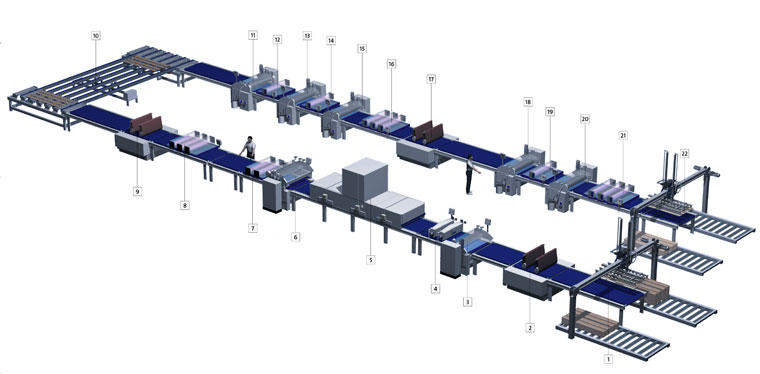
The advantage of the valved application is the significant reduction in the consumption of finishing materials
The advantage of using valances is the very small amount of material that is applied. The amount applied per layer is around 40-50 g/m², but can be up to 5-7 g/m². The main requirement is that the panels are very well calibrated. The products that are applied with a varnish have a very high solid content, between 96% and 100%, so the solvent emission is very low.
Application on the finishing line is done with a system of valves, some of which are used to apply the material and others to dose it. The applicator valves are coated with a special rubber. The hardness of this rubber is given by a number determined by the Shore method and is important information for the coating supplier. The metering valve, used to adjust the amount of material applied, is made of metal.
The amount of material applied can be adjusted in 3 ways:
- from the distance between the applicator and dispensing valve,
- by adjusting the pressure on the object to be finished
- by adjusting the direction and speed of rotation of the metering valve.
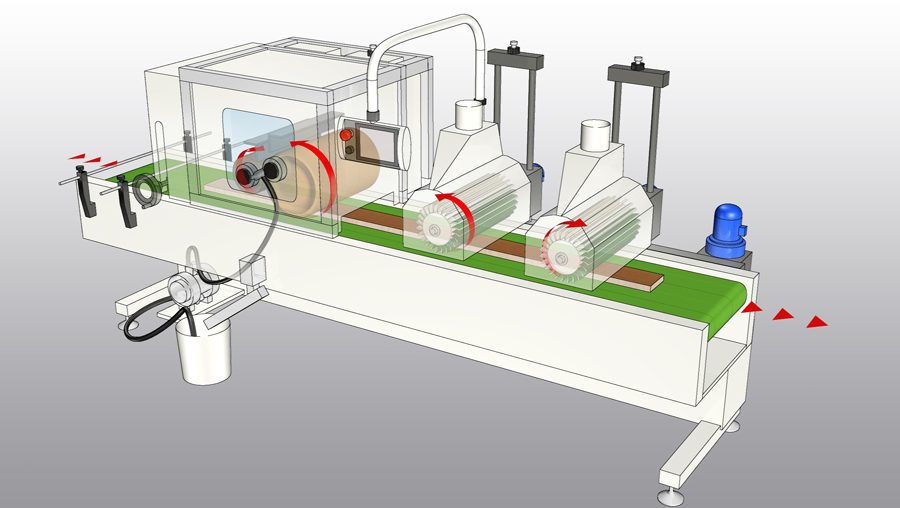
Types of valve applicators
Depending on the number and positioning of the valves, there are several types of systems:
- Reversible dispensing valve applicator (standard and reverse mode). It is recommended for the application of stains, primers, varnishes and enamels. By rotating the metering valve in the opposite direction to the applicator (reverse mode), a more uniform coating is achieved.
- Machine with a dosing valve and an adjacent valve that rotates as standard. It is used for applying paints.
- Machine with two applicator valves. The second applicator valve rotates in the opposite direction to the conveyor belt feed direction. It results in reduced consumption and a more uniform surface. It is mainly used when applying UV varnishes.
- Applicator machine with two applicator valves. Between the first and second application the material does not dry out but turns into a gel. It is mainly used to improve adhesion between coats.
UV curing of applied materials with varnish
The applied material is cured by passing it under UV lamps. With a large body there is no need for conventional dryers to remove the solvent before entering under the lamps. Products with 100% body can go under the lamps immediately, those with a percentage of solvent need a flash-off time for the solvent to be removed. The solvent remaining after UV drying is seen as an opalescence in the film. UV curing cures the material instantly, and the pans can be immediately sanded, stacked or packaged.
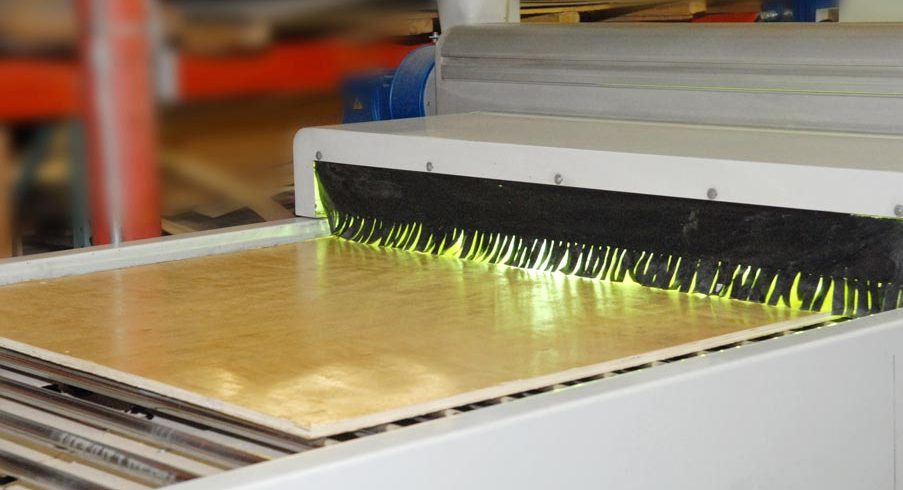
On such lines, berries can also be applied. They must be viscous to be applied with a wand and the colours must be UV-resistant.
Primer coats can be applied wet-on-wet. They are just gelled by lamps so that the coats adhere to each other, and sanding is done after the last coat has been applied and the entire film has cured.
Radiation sources of UV lamps
Two radiation sources are used for UV drying: gallium (Ga) lamps and mercury (Hg) lamps. Ga lamps have a wavelength greater than 420 nm and a lifetime of approximately 2000 hours. They are used to harden pigmented coatings and are often combined with Hg lamps.
Hg lamps have a wavelength of 200-380 nm and a lifetime of about 3000 hours. They are used for transparent materials. UV lamps need to be checked regularly because over time their power decreases and with it the drying efficiency.
Such industrial finishing lines are used by major manufacturers of parquet and finished panels for their very good productivity. They are automated lines where human input is very low.
I hope you find the information useful. As usual, we welcome additions. And if you have any questions or queries, please leave them in the space below. I'm sure I'll reply.
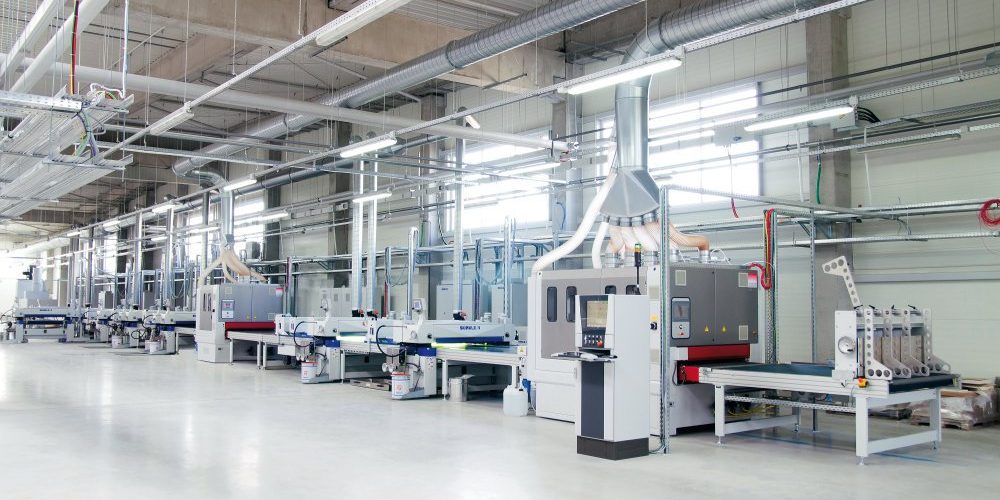













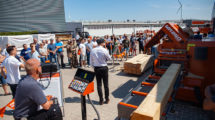
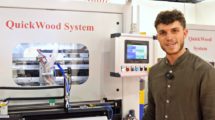


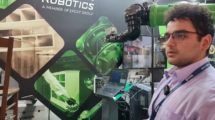


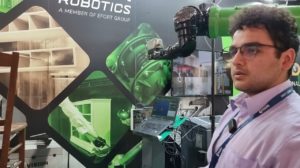
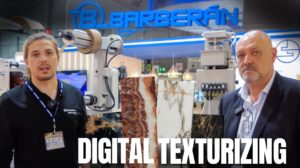
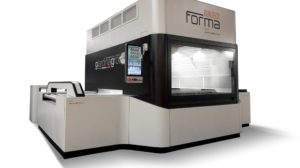
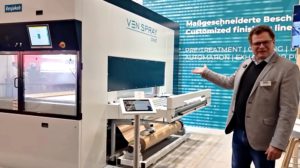
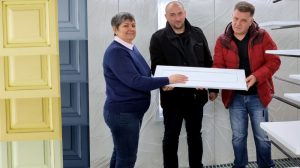


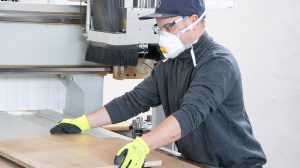
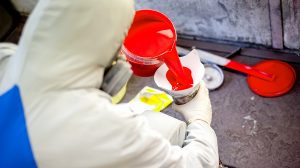

Hello,
I want to buy UV varnishing equipment, preferably SH, can you help me with information?
You can call on companies such as Finex (Cefla representative) or Rolem (Makor representative). It is good to call these companies, tell them what you want and see a similar installation at one of their beneficiaries. This gives you the opportunity to see what is best for you.
All the best!